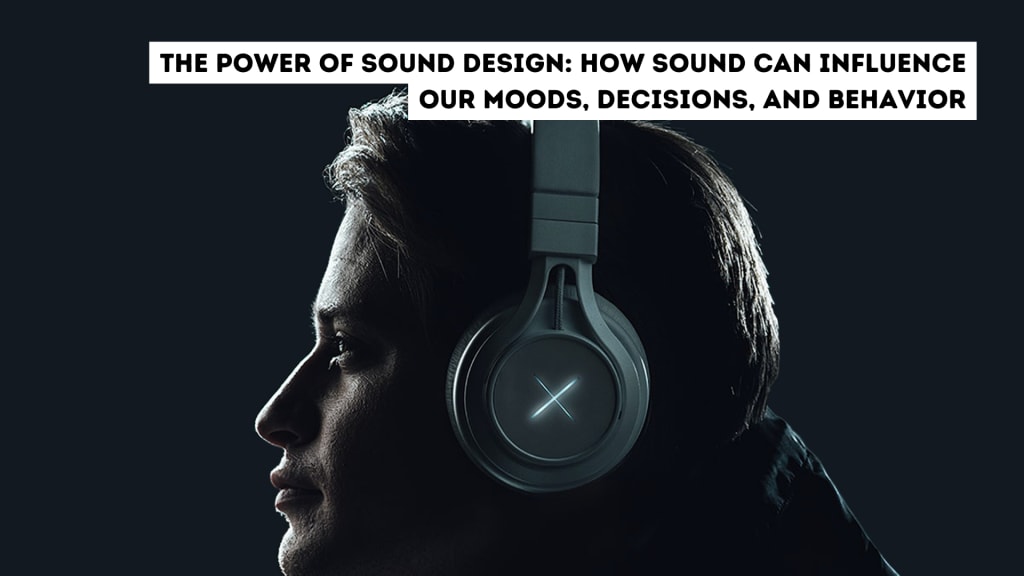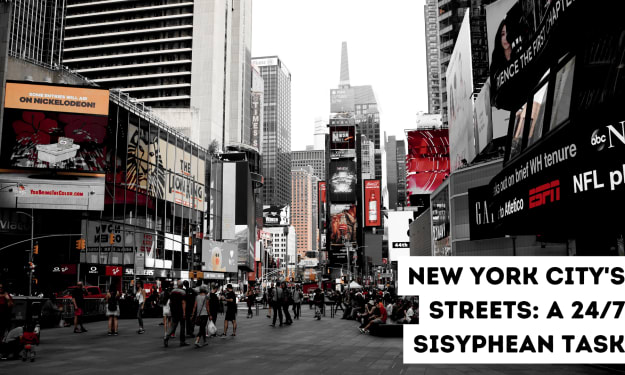The Sound of Things: How Sound Design Is Used to Influence Our Emotions, Perceptions, and Behavior
From vacuum cleaners to cars to food, sound design is used in everything to create a desired effect.

Have you ever wondered why some products sound the way they do? Why are vacuum cleaners so loud? Why do car doors close with a satisfying thunk? And why do potato chips make such a satisfying crunch?
The answer is sound design. Sound design is the art of manipulating the auditory elements of products to create a desired effect. It's used in everything from vacuum cleaners to cars to food.
There are three main reasons why companies use sound design: feedback, branding, and behavior.
Feedback
One of the main reasons why companies use sound design is to give people feedback about how their products are working. For example, a vacuum cleaner that's too quiet might not seem like it's doing a good job. So, companies make their vacuum cleaners louder so that people can hear that they're working.
Branding
Another reason why companies use sound design is to create a unique brand identity. For example, the sound of a Harley-Davidson motorcycle is instantly recognizable. This helps Harley-Davidson stand out from its competitors.
Behavior
Finally, companies use sound design to influence people's behavior. For example, the satisfying crunch of a potato chip can make people want to eat more chips.
Of course, sound design isn't always used for good. Sometimes, it's used to manipulate people. For example, some car companies use fake engine sounds to make their cars sound more powerful.
But even when it's used for good, sound design can be a powerful tool. It can influence our emotions, our perceptions, and even our behavior.
So, the next time you hear a product make a sound, take a moment to think about why it sounds that way. You might be surprised at what you learn.
The Future of Sound Design
As technology continues to evolve, the possibilities for sound design are endless. For example, digital devices can now be programmed to make different sounds to signify different things. This could be used to improve safety, efficiency, or even just make our lives more enjoyable.
For example, a car could be programmed to make a different sound when it's driving at a low speed than when it's driving at a high speed. This would help pedestrians to know when it's safe to cross the street.
Or, a digital assistant could be programmed to make different sounds to indicate different levels of urgency. This would help users to quickly understand what the assistant is trying to say.
The possibilities for sound design are truly endless. And as technology continues to evolve, we can expect to see even more innovative and creative uses of sound in the years to come.
Here are some specific examples of how sound design is being used in the future:
Smart homes: Smart homes are using sound design to create a more immersive and user-friendly experience. For example, a smart home might use sound to indicate when someone is at the door, or to notify users of important events.
Virtual reality: Virtual reality is using sound design to create a more realistic and immersive experience. For example, a VR game might use sound to simulate the sound of gunfire or the roar of a crowd.
Augmented reality: Augmented reality is using sound design to create a more interactive and engaging experience. For example, an AR app might use sound to guide users through a museum or to provide information about the objects they're viewing.
As these technologies continue to develop, we can expect to see even more innovative and creative uses of sound design. Sound design is a powerful tool that can be used to improve our lives in many ways.
About the Creator
Plantera Digital Media
welcome to my page here i share
- Stories
- Interesting facts about the world around us
- Thought-provoking theories about the nature of reality
- Useful information that can help people in their lives
Enjoyed the story? Support the Creator.
Subscribe for free to receive all their stories in your feed. You could also pledge your support or give them a one-off tip, letting them know you appreciate their work.






Comments
There are no comments for this story
Be the first to respond and start the conversation.